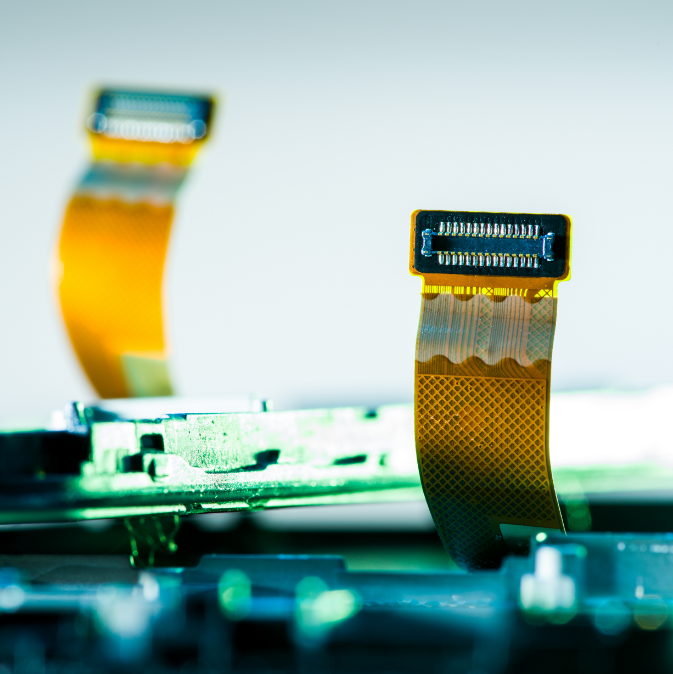Innovation is key in the world of electronics. Manufacturers are constantly looking for ways to innovate the process of making products as demand grows for smaller, more flexible and high-performance electronic components. One of the most innovative technologies which has garnered a lot of interest is flex circuit manufacturing.
Flex circuits are also called flexible printed circuit boards (PCBs) and offer a myriad of advantages over rigid PCBs. These circuits are able to bend, twist and adapt to different forms. They are ideal for applications requiring complex designs, a limited amount of space or a greater durability.

Flex circuits enable manufacturers to expand the boundaries of design by providing an adaptable base that adjusts to the shape of the product. Flexibility allows for more imaginative and compact designs, ultimately creating lighter and smaller devices. Imagine a phone that seamlessly curves around the hand. Wearable health monitor that is discreetly placed around the wrist. Perhaps even a smart device that has a seamless, ergonomic design. Engineers and designers can turn their designs into reality thanks to Flex Circuits. This technology allows them to open a whole world of new possibilities for designing products.
Beyond aesthetics in terms of design, the durability of flex circuits sets them apart from their rigid counterparts. PCBs made of traditional materials can be damaged by vibrations, shocks, as well as repeated bends. Flex circuits are constructed with substances that are resistant to these elements, making them highly robust. This is essential in industries like automotive and aerospace, or medical, that require electronic components that can withstand the most extreme conditions.
Flex circuits are a flexible product. Manufacturing methods employed in their production influence the quality of this. Contrary to rigid PCBs, which are constructed using several layers of fiberglass and copper, flex circuits are constructed with a thin, flexible substrate, like polyimide and polyester. This substrate serves as the basis of the circuit. It allows the circuit to bend, twist and maintain electrical connectivity. Flexible circuit makers employ advanced manufacturing techniques to precisely cut circuits, add intricate interconnects, or place components directly on the substrate.
Surface mount technology (SMT) permits components to be mounted directly onto the flexible circuit. This allows for greater flexibility and functionality. SMT lets manufacturers place electronic components directly on flex circuits. The bulky connectors are eliminated and overall device size is reduced. This method is not just efficient and improves signal integrity, it also reduces weight and enhances thermal control.
Moreover Flex circuit manufacturing methods allow for efficient prototyping and the ability to scale production. The flexibility of circuit designs allows for rapid iterations during the prototyping phase, accelerating the development process of a product. Because of their capability to be manufactured in high quantities through automated manufacturing processes, flexible circuits are a cost-effective option to produce large quantities. Flex circuits are an ideal choice for companies that want to get their innovative ideas on the market swiftly. For more information, click flex circuit manufacturing
It is crucial to be able to rely on a reliable source for flexible circuits since the need is expected to grow. In order to ensure the highest quality, accuracy and reliability in the production of flex circuits it is essential to work with reputable and experienced producers. They are able to assist clients throughout the process of designing and manufacturing as well as provide valuable advice on material selection, and ensure compliance with industry standards.
In the end, flex circuits are vital components that permit electronic systems to be built today to reach the highest possible degree of complexity. Flex circuits play a key component in the development of intricate electronic systems. From consumer electronics to military equipment they are employed in many different applications. Flexible substrates, that can traverse small spaces effortlessly, allow engineers to develop complex designs while still fitting within the dimensions of the assembly. While it’s true that there are a variety of other forms of circuit routing exist however their electrical and mechanical characteristics aren’t as impressive as those provided by flex assembly solutions when dealing with the rigors of size. If you’re looking for projects that require complex interconnections that combine various technologies into a perfectly constructed package, designing using flexible circuits is far and far the most effective choice.